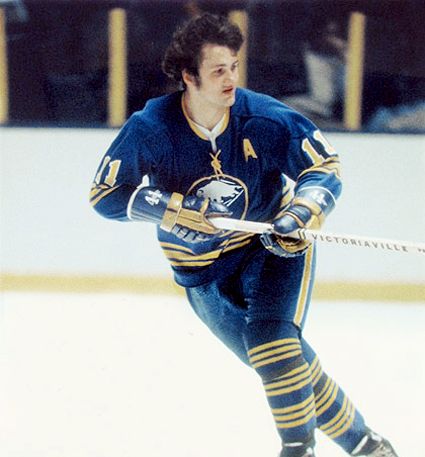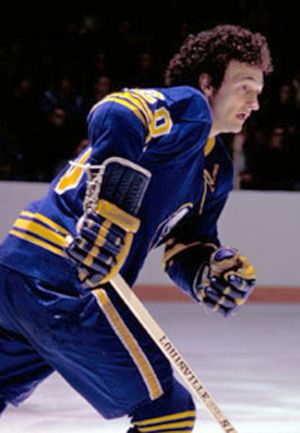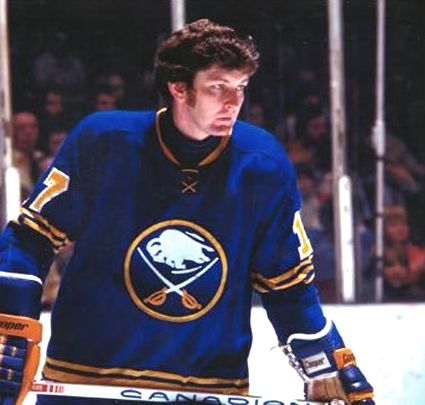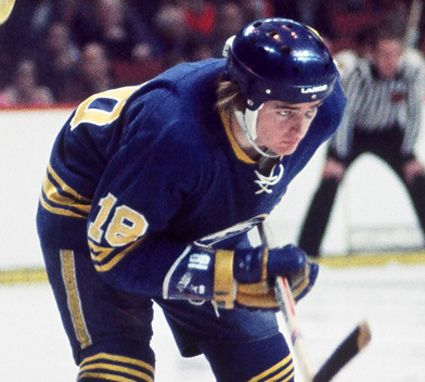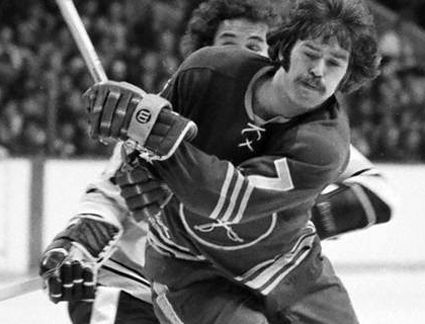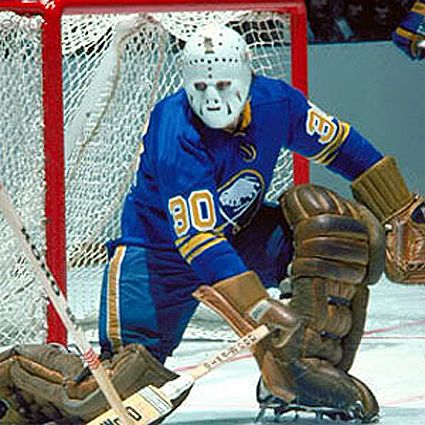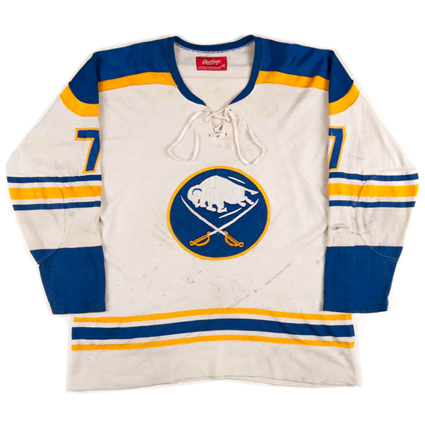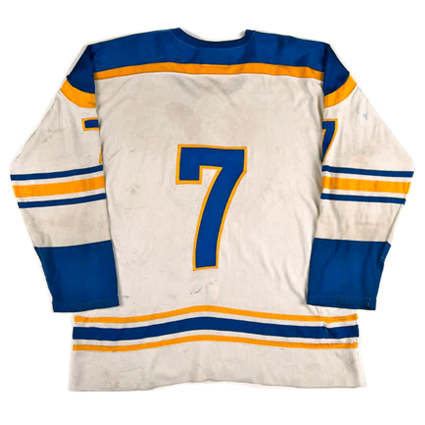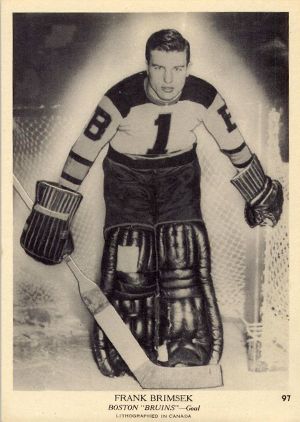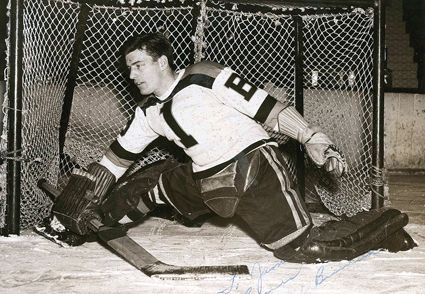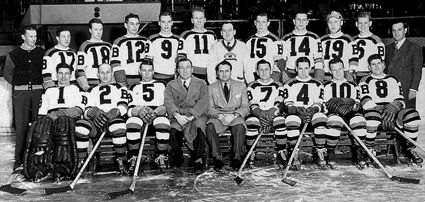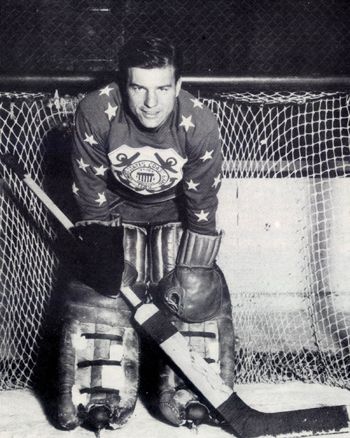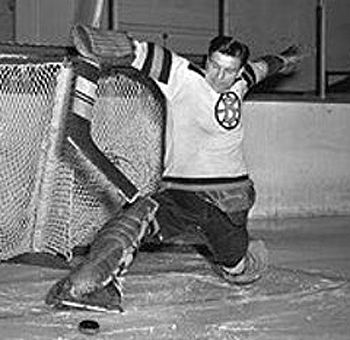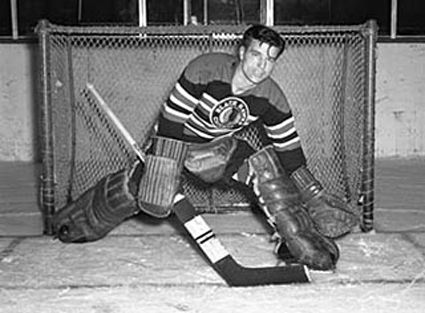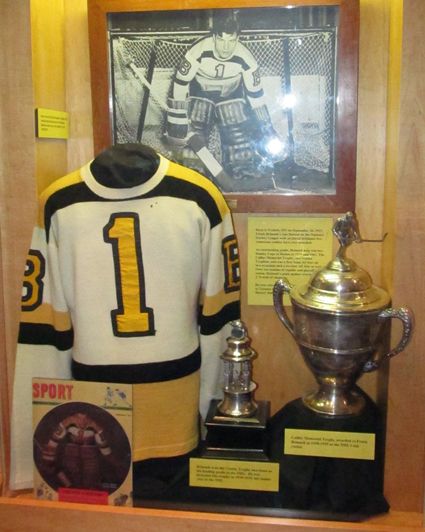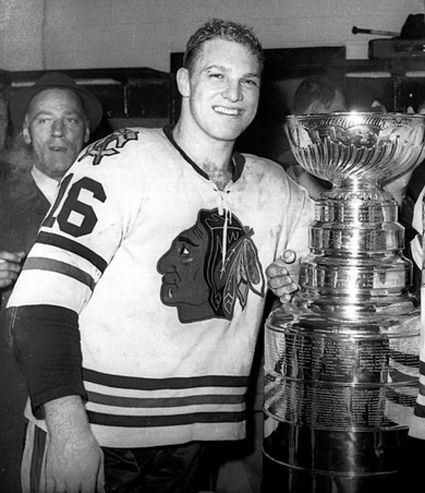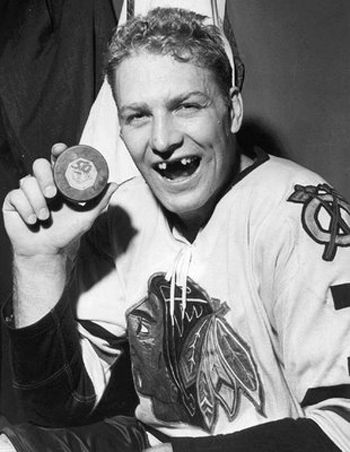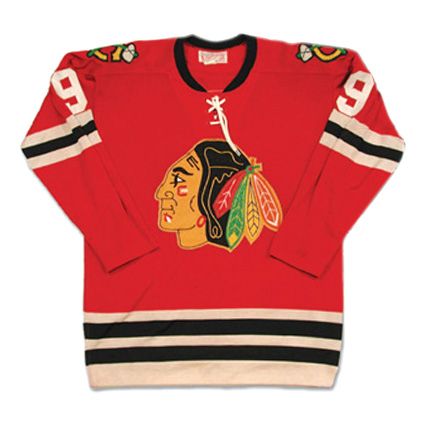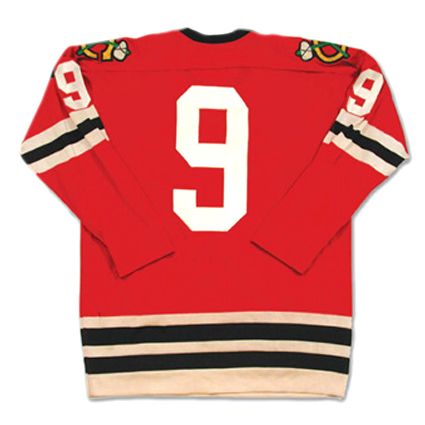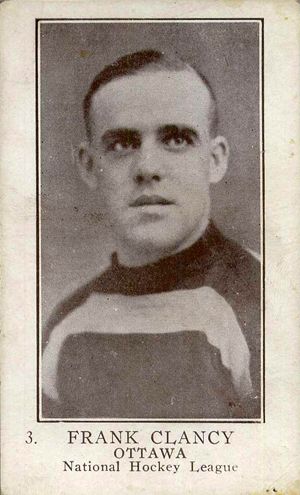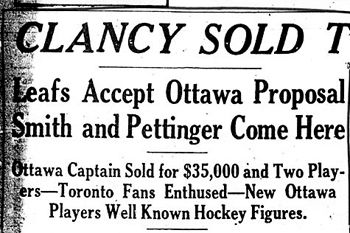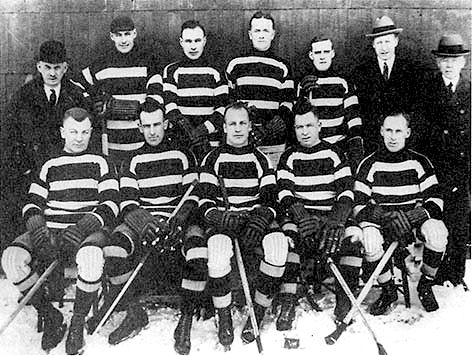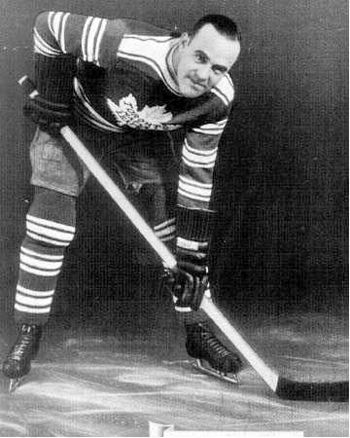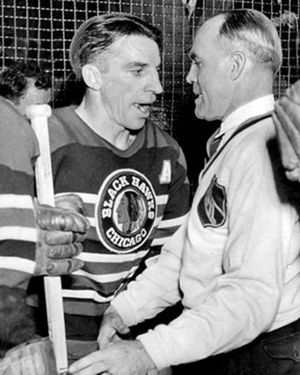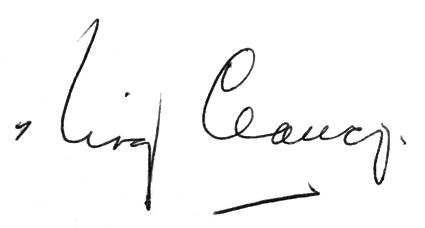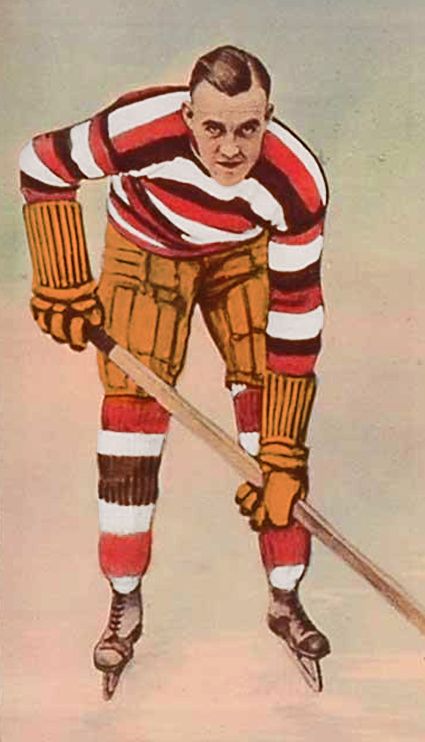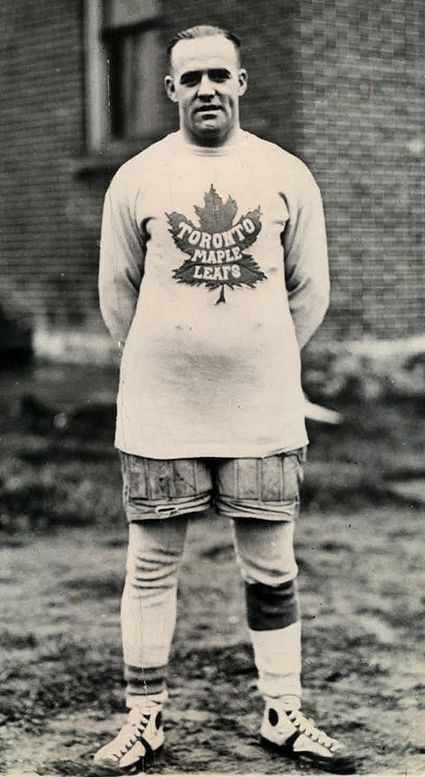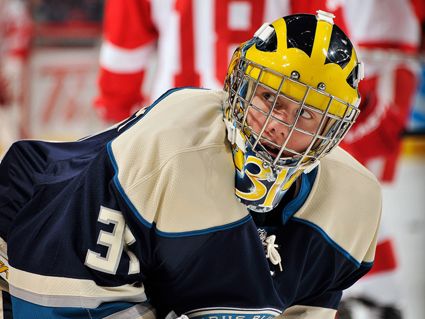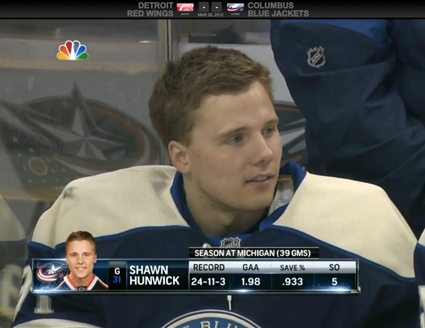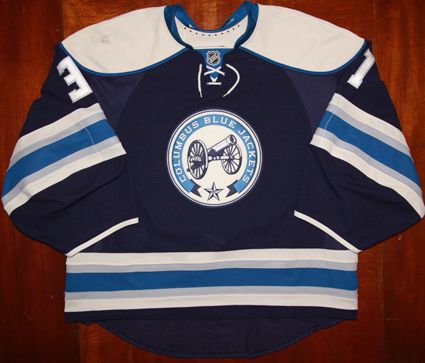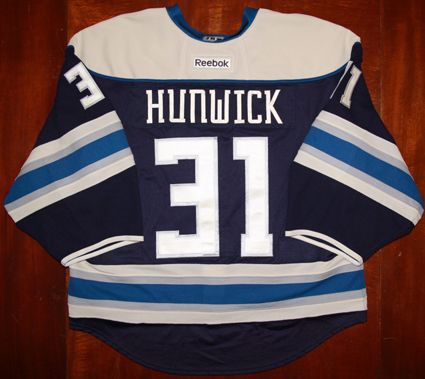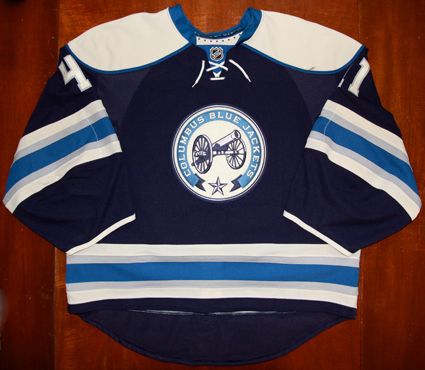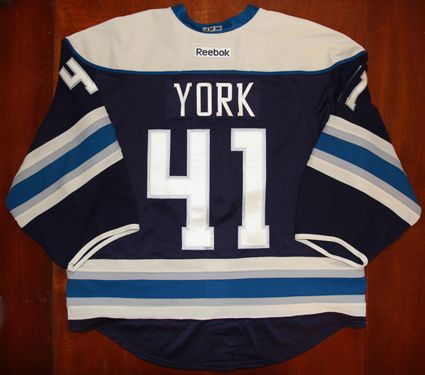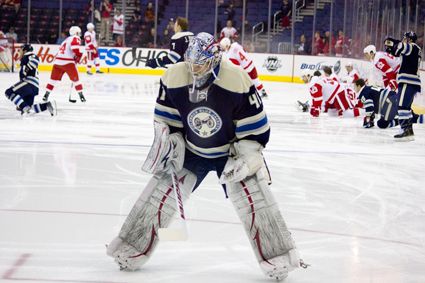Location: The Buffalo Memorial Auditorium
The Teams: The second year Washington Capitals taking on the host Buffalo Sabres.
Entering the contest on this evening the visiting Capitals staggered into Buffalo with a dreadful 3-26-4 record, not having won a game since November 26th. Buffalo, on the other hand, had gotten off to a terrific start, winning 16 of their first 20, but had recently had hit a rough patch, going 1-4-1 over their previous six games.
The 16,433 fans settled into their seats as Gary Desjardins took to the Sabres crease, unaware that those seats should have been outfitted with seat belts for the thrill ride they were about to be taken on...
The Sabres got on the board first with a goal by Gilbert Perrault from Jerry Korab and Fred Stanfield just under three minutes into the game and Stanfield extended the Sabres lead to 2-0 with a goal past Ron Low in the Capitals net from Don Luce and Jacques Richard at 14:16.
With Danny Gare off serving a penalty he was assed just prior to the end of the first period, Tony White of the Capitals cut the Sabres margin to 2-1 from Bill Clement and Yvon Labre just 23 seconds into the middle period. It was the last glimmer of hope for the Capitals, as the Sabres would go streaking off into the distance soon thereafter.
Rick Martin restored the two goal margin less than two minutes later with a goal from Peter McNab and Brian Spencer at 2:15, followed by Luce from Gare and Craig Ramsay 34 seconds later.
Stanfield's second goal came at 10:19 from Richard prior to Curt Bennett scoring an unassisted goal for Washington at 12:17 to make the score 5-2 in favor of the Sabres, which was still a reasonable margin for the overmatched Captials.
It would not remain that way.
Martin's 20th goal of the season and second of the period was assisted by Jim Schoenfeld and Spencer with just 11 seconds remaining in the second period to send the teams to their dressing rooms with Buffalo holding a commanding 6-2 lead.
Apparently only the Sabres answered the bell for the third period, as Ramsay made it 7 for the Sabres at 56 seconds from Gare and Luce. The rout was truly on when Martin completed his hat trick from Gare and Perreault at 4:47 to extend the Buffalo lead to 8-2 on what would shockingly be the first and only power play goal of the night for the Sabres.
Perreault scored next 1:19 later from Jim Lorentz and Schoenfeld at 6:06, quickly followed by Gare team leading 22nd goal of the season with an assist from Bill Hajt at 7:27, which allowed the Sabres to reach double digits at 10-2 and finally chase the beleaguered Low from the Captials net after allowing 10 goals on 36 shots.
Bernie Wolfe was himself thrown to the wolves when he replaced Low as the Washington net minder, as he immediately was victimized by Luce with assists from Gare and Hajt at 8:20. Before Wolfe could recover, Martin banged home his fourth goal of the game to tie Luce for the team lead with his 22nd goal of the season assisted by Schoenfeld and Spencer at 9:38 to make it an even dozen for Buffalo.
McNab would contribute a goal to the cause at 16:32 from Martin and defenseman Paul McIntosh, which was the only point he would score in 42 games that season, tying him with goaltenders Desjardins and veteran Roger Crozier!
There was still one more goal remaining, as Stanfield completed his hat trick with 1:49 remaining in the game for Buffalo's eighth goal of the period to make the final score 14-2 in favor of the Sabres. Wolfe would end the night with 10 saves on 14 shots in 12 minutes of playing time.
Of the 14 Buffalo goals on 50 shots, 13 came at even strength and 12 of the 14 saw both possible assists awarded to allow the Sabres to set the NHL record for Most Points by One Team in One Game with 40 from 14 goals and 26 assists, which certainly had those in the press box looking for additional sheets of paper to record all the scoring plays!
Martin led Buffalo with 4 goals and an assist for 5 points, equalled by Gare's goal and 4 assists. Stanfield's hat trick and assist put him in at 4 points, along with Perreault and Luce, who each had 2 goals and 2 assists. Richard, Spencer and Schoenfeld each had 3 assists to their credit and McNab and Ramsay each had a goal and an assist, while Hajt had a pair of helpers. Korab, Lorentz and McIntosh each had single assists to round out the Sabres side of the ledger to establish the league record which had stood for 31 years since the Detroit Red Wings had 15 goals and 22 assists on January 23, 1944.
Since then, only the 1977-78 Sabres, the 1992-93 Calgary Flames (both with 37 points) and the Minnesota North Stars 39 points from 15 goals and 24 assists on November 11, 1981 have taken a serious run at the Sabres record.
Buffalo would go on to finish the season with a 46-21-13 record and tie for second for most goals scored that season with 339, an average of 4.24 per game, while the Capitals would crawl out of Buffalo having now gone winless in 12 games on their way to 25 games without a victory, a streak which would extend from November 29, 1975 to January 21, 1976. Washington would go 0-22-3 during that period. They would finish the season at 11-59-10 for 32 points, dead last in the league with 394 goals against (43 more than the Kansas City Scouts) for an average of 4.93 against per game, yet an 11 point improvement and 52 goals less than the Captials horrific debut season a year prior!
For the record, Desjardins got the win in goal for the Sabres, making 14 saves on 16 shots.
The names would arrive by league mandate in 1977-78 and their main logo would be placed on the shoulders the following season when the lace-up collar would now be replaced by a v-neck.
Martin would finish the season with 49 goals and 86 points, good for third on the team behind "French Connection" linemates Perreault and Robert and just one behind Gare for the team goal scoring lead.
Today's video feature is a tribute video to the late Rick Martin, who passed away in March of 2011.

